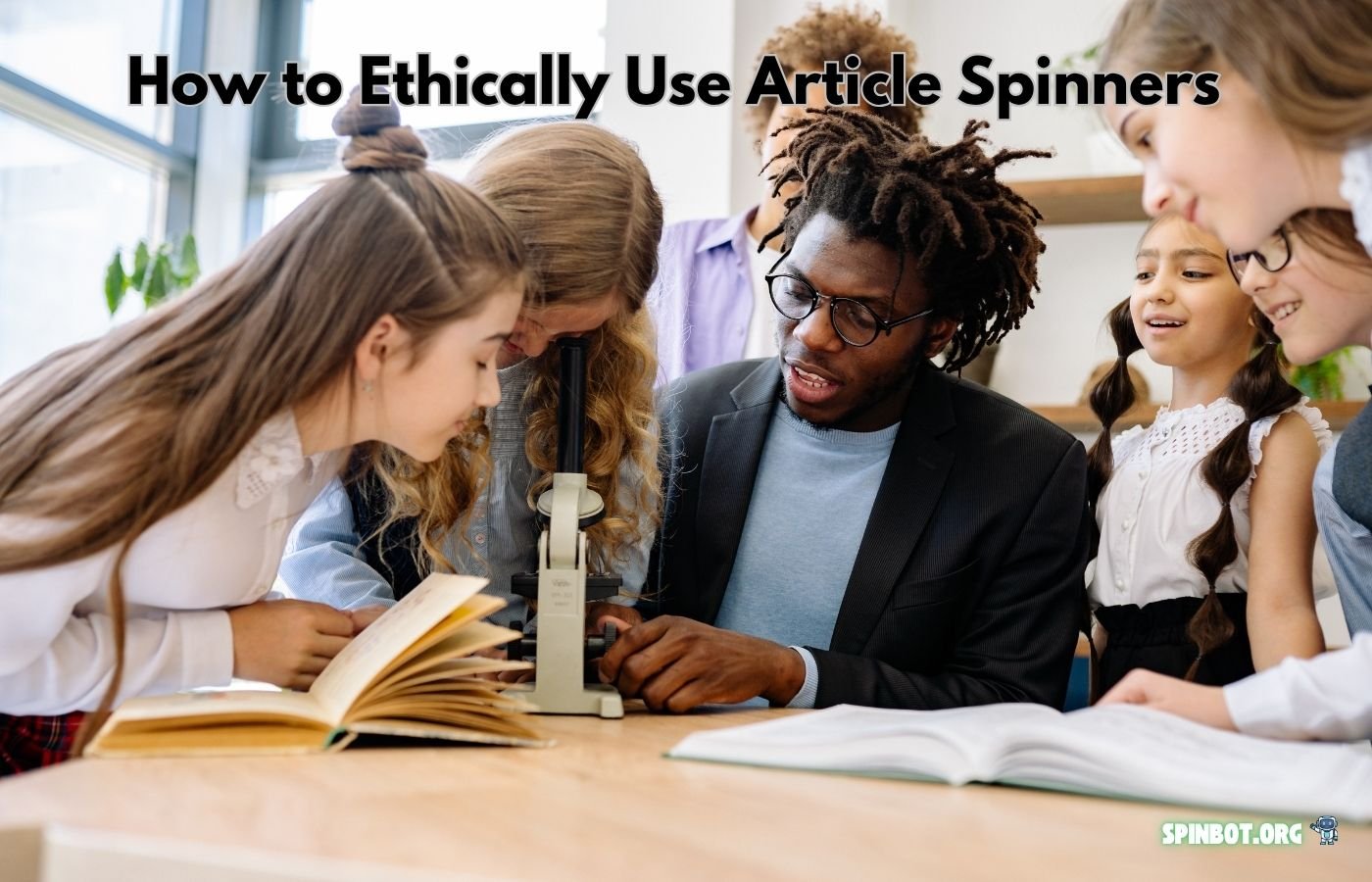What is Article Spinning in SEO?
Article spinning, often used in SEO, is the process of rewriting or paraphrasing a piece of content to create multiple versions of it. This is usually done using automated tools known as article spinners. The goal is to produce unique articles for different websites, all while keeping the core message intact.
In SEO, article spinning is used to:
- Avoid duplicate content penalties
- Generate content for blog posts, articles, or product descriptions
- Improve SEO by creating backlinks
However, the practice has a darker side when used unethically. While spinning can help with SEO, it can also be harmful if the content lacks originality or quality. So, how can we make sure that we are using article spinners the right way?
Is Article Spinning Legal?
This is one of the most frequently asked questions by content marketers and webmasters. The short answer is: yes, article spinning is legal. However, just because it’s legal doesn’t mean it’s always ethical or effective for your SEO strategy.
The legality issue mainly arises when you spin content without ensuring its originality or when you plagiarize someone else’s work. Content created through article spinning must not violate copyright laws. If you’re using someone else’s material, even if you spin it, you may still be infringing on copyright if the spun content is too similar to the original.
In terms of SEO, Google and other search engines penalize websites that use spun content in a way that provides little to no value to users. When spun content is stuffed with keywords or appears to be copied, it could harm your rankings. So, while spinning isn’t illegal, doing it incorrectly can lead to significant penalties and loss of credibility.
How to Ethically Use Article Spinners
Ethical use of article spinners involves creating high-quality, unique content that provides value to readers. Here’s how to use article spinners ethically while achieving the desired results for SEO and your content marketing efforts.
1. Use High-Quality, Unique Sources
One of the biggest mistakes people make when using article spinners is relying on low-quality, generic content sources. While article spinners can help you create variations of content, the base material should always be high-quality and unique. When using an article spinner, input articles from reputable sources, ensuring they are well-researched and contain valuable information.
- Avoid using content from spammy or unreliable sources.
- Ensure the original content is informative, well-written, and provides value to the audience.
- Use articles that have the potential to add real insights or solve problems for your readers.
2. Rewrite, Don’t Just Spin
The most ethical way to use an article spinner is to rewrite content instead of simply spinning it. Article spinners should help you reword and restructure content while keeping the meaning intact. Don’t just swap out a few words here and there. Ensure that the spun version adds new perspectives, more detail, or clearer explanations.
When spinning articles, remember to:
- Change the sentence structure and make the content flow naturally.
- Add your own insights or real-world examples.
- Always check the spun content for clarity and readability before publishing.
3. Check for Plagiarism
Even when using a spinner, it’s essential to ensure that the content is 100% original. You can achieve this by running your spun articles through plagiarism-checking tools like Copyscape or Grammarly. These tools help identify any instances where the content may still be too similar to the original, even after spinning.
4. Maintain Readability
Spun content must still be readable and user-friendly. Many automated spinners generate content that sounds robotic or lacks flow. Always read through the spun content and ensure that it’s smooth and easy to understand.
Here are a few things to keep in mind:
- Break the content into short, digestible paragraphs.
- Avoid long sentences and complicated words.
- Ensure that the content is engaging and informative, not just keyword-stuffed.
5. Limit Automation
While automated tools can be helpful, it’s crucial to balance automation with manual editing. Automated spinners often produce content that is grammatically correct but lacks nuance or context. Always review and edit the spun content to ensure it aligns with your brand’s voice and messaging.
If you don’t have time to manually edit every piece, consider hiring a professional editor to refine the content after spinning.
6. Avoid Keyword Stuffing
Article spinners often help with generating content with keywords embedded. However, overloading your spun articles with keywords can trigger a penalty from Google. Ethical article spinning requires a natural flow of keywords.
- Use keywords sparingly and in context.
- Ensure that the article reads naturally and not as if it were written for search engines.
- Focus on user experience over keyword optimization.
7. Provide Value to Your Audience
The ultimate goal of article spinning should be to provide valuable, relevant content to your audience. It’s essential to keep the reader in mind while creating spun articles. Instead of focusing solely on SEO or link-building, aim to educate, entertain, or solve a problem for your audience.
Ask yourself:
- Does the spun content provide real value?
- Is the content informative or entertaining enough to keep the reader engaged?
- Are you offering solutions to common problems or answering questions your audience has?
8. Test Spun Content for Engagement
Once you have spun your articles, it’s important to test them for user engagement. Monitor how readers interact with the content. Are they clicking on links? Are they sharing the article on social media?
If engagement is low, consider adjusting the tone, structure, or adding more detailed information to the spun articles.
Best Practices for Article Spinners
To get the most out of your article spinner while adhering to ethical guidelines, follow these best practices:
- Spin tax carefully: Use synonyms and variations in phrases, but always ensure the meaning remains the same.
- Limit the number of spins: Too many versions of a single article can lead to diluted quality. Keep the spun articles limited and ensure each one adds unique value.
- Use an experienced spinner tool: Choose a high-quality tool like Spinbot for creating your spun articles. Spinbot is known for its efficiency and effectiveness when it comes to generating readable and unique content.
- Set guidelines: If you’re working with a team, establish a set of quality standards for spinning. This ensures consistency and quality in every piece of spun content.
How to Use Spinbot for Free?
Spinbot is a popular article spinner that provides both free and premium services. Using Spinbot for free allows you to generate unique content quickly. Here’s how to use Spinbot for free:
- Visit the Spinbot website.
- Paste the content you want to spin into the provided text box.
- Click “Go” to generate a spun version of the content.
- Review the content and make manual adjustments as needed to ensure it’s both readable and original.
Spinbot allows you to spin up to 10,000 characters at a time. For users needing more advanced features, Spinbot’s premium version offers additional options such as bulk spinning and greater customization.
Legal and SEO Implications of Article Spinning
1. Legal Concerns in Article Spinning
While article spinning itself isn’t illegal, it can lead to legal issues if:
- You infringe on copyright laws by using someone else’s material.
- The spun content is too similar to the original and violates intellectual property rights.
To avoid legal trouble, always make sure the spun content is genuinely original and has added value. Plagiarism can lead to lawsuits and other legal consequences.
2. SEO Implications
From an SEO standpoint, spun content can either help or hurt your rankings. Google and other search engines are increasingly sophisticated at detecting low-quality, spun content. If the article is poorly spun or has too many keyword-stuffed phrases, it can lead to penalties, including:
- Lower rankings on search engine results pages (SERPs)
- A drop in organic traffic
- Possible removal from search engine indexes
On the other hand, ethically spun articles that offer value and are well-optimized for readability can improve SEO by:
- Enhancing content freshness
- Generating backlinks
- Attracting more organic traffic
Alternatives to Article Spinning
If you’re not convinced that article spinning is the right choice for you, there are several alternatives:
- Content Curation: Rather than spinning articles, curate content from multiple sources and provide your unique perspective.
- Outsourcing Content: Hire freelance writers to create high-quality content that aligns with your brand.
- AI-Generated Content: Use AI writing tools responsibly to create original, high-quality articles with a human touch.
Conclusion
Ethically using article spinners requires a balance between automation and manual effort. When done right, article spinning can save time and help you maintain a fresh content pipeline. However, it’s important to always prioritize quality, originality, and readability. By following best practices and adhering to ethical standards, you can harness the power of article spinners without falling into the traps of plagiarism, SEO penalties, and legal issues.

Raj blends SEO mastery with real-world freelance grit. From keyword to conversion, his expert writing helps readers and businesses win in today’s digital battlefield. Authentic. Sharp. Proven.

